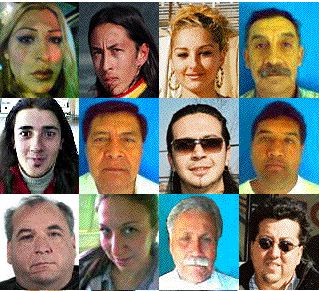Antoni Abad (Lleida, 1956), llicenciat en Història de l'Art per la Universitat de Barcelona, és un artista multidisciplinari que ha destacat pel seu ús innovador de la tecnologia digital en les seves obres. Al llarg de la seva carrera, ha explorat camps com l'escultura, la fotografia i, especialment, el vídeo, convertint-se en un dels primers artistes a aprofitar el potencial de les noves tecnologies per a l'art. La seva trajectòria va prendre un gir decisiu durant la seva residència a The Banff Centre for the Arts al Canadà, on es va endinsar en el món dels mitjans audiovisuals. Des d'aquell moment, Antoni Abad ha centrat la seva activitat en el mitjà digital.
El 1995, arran d'una invitació de Roc Parés per a la plataforma «MACBA en línia», Abad realitza Sísifo, la seva primera obra digital, que es va exhibir simultàniament al Museu d'Art Contemporani de Barcelona i al Museu de Wellington, a Nova Zelanda. Aquesta videoinstal·lació, que explora el mite clàssic a través d'una web, marca la seva incursió en el net.art. En els anys següents, els seus projectes continuen explorant la intersecció entre art, tecnologia i comunitat, destacant peces com 1.000.000 (1999), que guanya el Premi Arco Electrònic, i Z (2001-2003), un projecte pioner sobre l'ús de les xarxes socials, que li va valer el Premi Ciutat de Barcelona en la categoria multimèdia.
Abad ha estat un pioner en la creació de plataformes digitals per a col·lectius en risc d'exclusió, com sitio*TAXI (2004), que connectava taxistes de la Ciutat de Mèxic mitjançant telèfons mòbils, o megafone.net, una sèrie d'iniciatives que permeten a grups marginats com els gitanos, les treballadores sexuals, els refugiats i les persones amb diversitat funcional gestionar el seu propi discurs a través d'internet. El seu enfocament busca donar visibilitat a aquestes comunitats, permetent-los compartir les seves històries sense la mediació dels mitjans tradicionals.
El 2017, va presentar La Venezia che non si vede a la Biennal de Venècia, una interpretació sensorial de la ciutat realitzada amb un col·lectiu de persones invidents o amb baixa visió mitjançant l'app blind.wiki, que permet als usuaris registrar i compartir les seves experiències a través de gravacions d'àudio, creant un mapa sonor que ofereix una visió única de l'espai públic urbà des d'una perspectiva sensorial.
